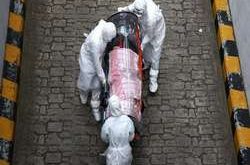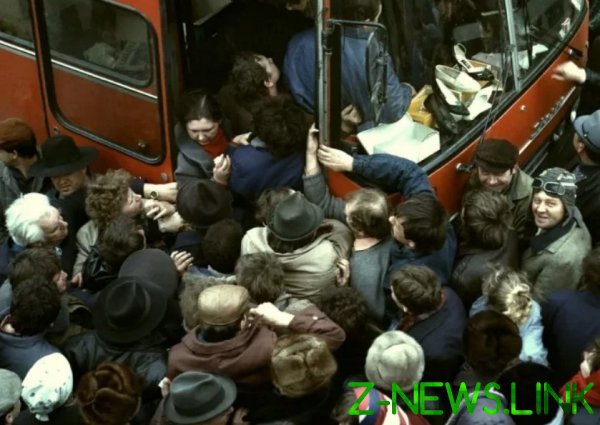
So, friends — today will be a great and interesting post about Soviet transport, and we will examine it not from the point of view of some sort of separate tram and bus services (what they like to do all sorts of metrifonate and travesty), and as a social phenomenon in General. Which, I have to say, was as poor as “free” Soviet apartment and everything else a socialist.
“Do you remember the warm tube tram from our childhood!” — shout the fans of the USSR, Recalling those times. “We went into the tram, sat down my knees, looking out the window, eat the best ice cream in the world and enjoy life! And now for a mortgage to pay, wife give money, go to work, children see — not life and hard labor. Give me back my Union!”. Of course, I’m exaggerating somewhat, but in General all the memories of the “Soviet transport tube” sound that way — in fact, it was no good, and in today’s post I will demonstrate.
So in today’s post — Soviet discussed poor public transport. Make sure you check out the article below, write in the comments your opinion, well to friends to add do not forget)
The history of the Soviet public transport.
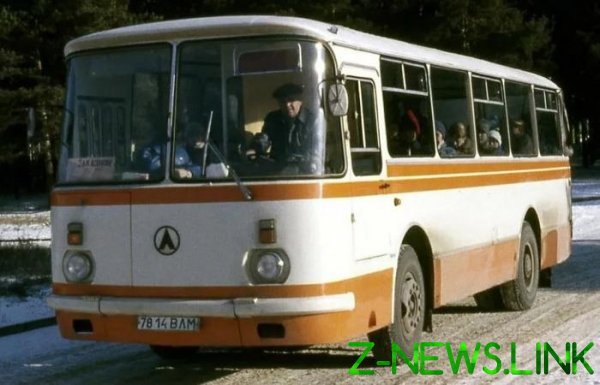
The Bolsheviks like to tell stories about what’s supposedly only after the revolution has finally begun the development of public transport, and before that lived in the stone age — hauled the furs out of the woods on sleds-sledges. In fact, it’s a solid Soviet myths — public transport in cities began to develop long before the October revolution , say in the Belarusian city of Vitebsk tramway was opened in 1898, almost 20 years before the coup, and it was a full electric streetcar, not a tram.
After 1917, the Bolsheviks requisitioned the former Royal factories for the production of electricity and road transport (e.g., AMO), and began to tell me how wonderful “the Soviet transport” is available there. In this network of urban public transport developed slowly and unevenly — mostly addressed as quickly so would be cheaper to bring the working masses to the factory and take them back — but about convenience, no one thought.
In fact, that this state of Affairs persisted throughout the Soviet era. Add to this the almost complete lack of personal transport (it could afford very few inhabitants of the Soviet Union), and you’ll understand why Soviet public transportation was so poor, always crowded and generally very poor.
In the country of rusty smelly trams and buses.
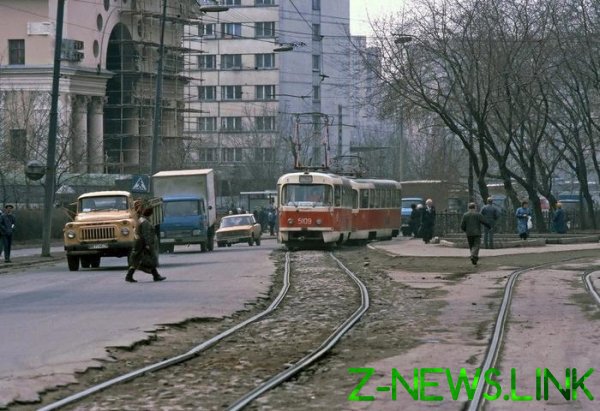
The misery of Soviet transport was evident in everything from the accuracy of routes and ending with the quality of the rolling stock. And it’s not the time of creation, look at any old German or Swiss tram of the same era made in the sixties, he continues to look stylish and comfortable. Yes, the Windows are slightly less than modern, well — not low, but overall everything was done very efficiently, and that is called “for the people”.
Soviet transport was poor from the outset, even in its first years of operation. Buses “LAZ” was incredibly smelly, as produmannoe traction system exhaust dragged into the cabin through the back door, because of what “Lazy” is called “gas vans” — the ride in such a bus could cause a strong headache for the rest of the day. In long-distance same “Hole” the rear padded seat, incredibly hot off of a working engine, which in the summer the back of the salon turned into a torture chamber.
Soviet trolleybuses due to poorly designed insulation system could be electrocuted — it was enough in wet weather to stand with one foot on the ground and the other to put on a moving trolley — discharge with poorly insulated housing went into the ground and killed the man. That is why for many Soviet trolleybuses back to drag a metal chain she was supposed to serve as something of a grounding.
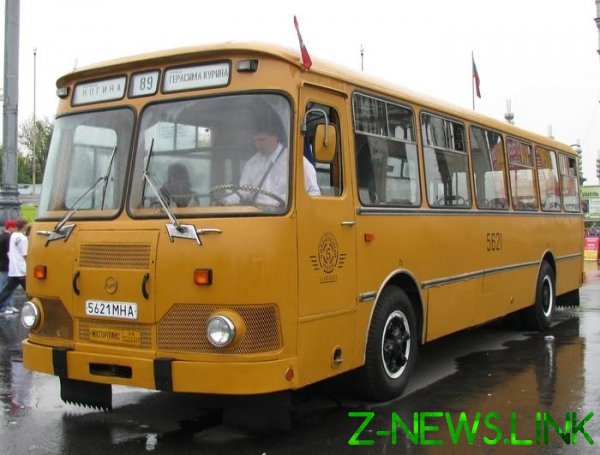
Buses were no better. Odnoy of the most popular models of Soviet urban buses were LiAZ-677, which apparently invented some sophisticated Inquisitor — the car had only 25 seats with a total estimated capacity of 110 people, but this bus was Packed to 250 people at rush hour, literally, hang from each other on the heads on the small rear platform with steps might be ten people. When such an overloaded bus was going uphill it seemed, that he will not stand, the strain will crack and roll back to the bus Park. Ate this miracle 45 liters of fuel per 100 kilometers.
Trams were also “good” — for example, in Minsk went Soviet trams RVRwho had a very awkward high steps and, in General, was done very badly — during the movement was unsteady and creaked as the wagon, under the floor of the tram is often something loud thump and glass lamps was leaking rainwater, and then there is fun hanging out, showing passengers drowned mosquitoes. From time to time the trams burned, usually the process begins with the rear of the site — the salon was beginning to fill with life-giving smoke with the smell of burning clutch, then the rear passengers shouting announced the fire alarm and evacuation.
In General, to summarize this section, I will say — the Soviet transport was terrible and of low quality. Also, it was constantly crowded, but more on that below.
A country where everyone.
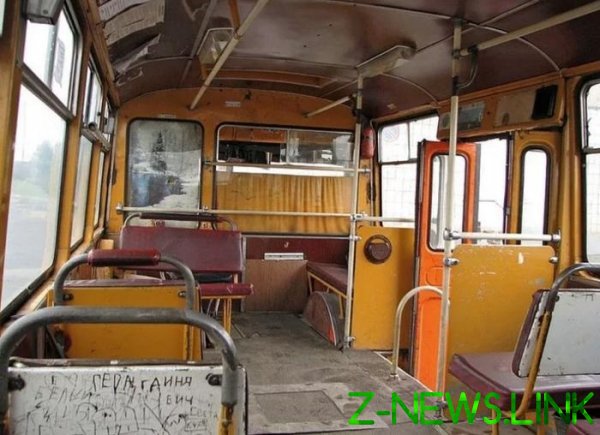
Before I start telling you about the tram scandalo and fights, I will say a few words about the attitude of Soviet citizens to transport. As in other spheres of Soviet life — the citizens did not know what portion of their taxes goes to public transport and not feel that everything is done on their own money. The attitude was appropriate — “all around collective, all around no one’s.” More precisely — all around the state.
Of the state of the tram was not considered shameful to steal the lamp, they are often stolen from old models of cars, where all of the fixtures were still open and easily understood. When there were leather seats and they cut and stole huge chunks of skin. And it was not leather, but some cheap leatherette — stealing and, in the Soviet tram seats and sofas were always earnest sewn and stitched patches. The enamel on the seats and walls were always scratched inappropriate labels or just ischyrion lines and flourishes — it is also considered the norm.
About also belonged to the transport and the passengers and drivers of a tram car or bus was like “anyone’s”, the driver often drove the car very roughly, with disregard to the relationship and to the car and to the passengers.
In this section you must also be said about purely Soviet “life hacks” with coupons that had to happen first, from Soviet poverty, and secondly — all from the same devil-may-care attitude. Fans of the USSR often like to cite as an example the tram signs from the sixties — “conscience is the best controller” — then the system works, when you throw a coin into the machine and rewind yourself a voucher from the ribbon. “Ah what time it was and people” scream the fans of the USSR, no one even coupons didn’t steal!
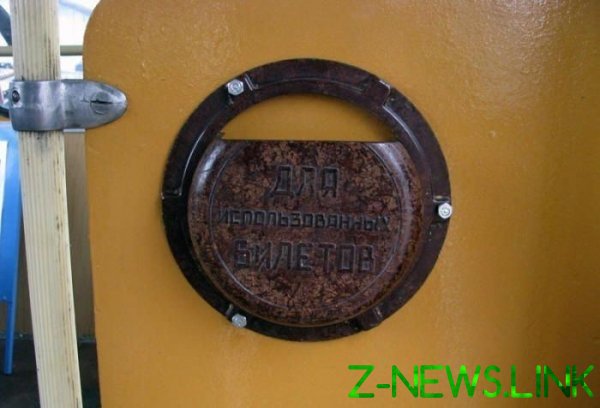
In fact, the ticket is stolen, and how, and stole not only the coupons and money. This was done just had to get up at rush hour at the machine and take money from everyone to buy a voucher, supposedly “helping” them. In this case, the machine was down only part of the money (the rest went down in his pocket), and had too rewind to how much such a trip could be to collect no less than the ruble fines. System, by the way, quickly covered up — she complained conductors, which covered the shortage out of pocket.
There were other life hacks — one of them was called “the book”. Its essence was that the passenger in a special notebook collected validated the tickets, the marking on each page the number of the route and the car. Then, when you log on to the same car on the same route, it was possible to punch a new voucher, and get old — because the composters were the same, with the same pattern.
Another Soviet life hack called “iron” is when using specially spent skill voucher has not made it to the end, as it were, exercise a composter. Inspectors considered these coupons punched, but after it was home to swallow and iron again to obtain a new voucher. And many just took the punched coupons from orgalitovoj boxes labeled “used tickets”.
“Hamley tram“, the hustle and fight.
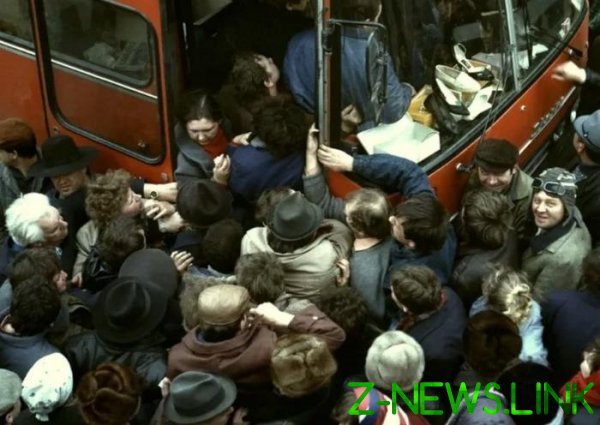
In addition to the low quality of rolling stock, as well as in addition to disregard for passengers (as we talked in the previous sections), Soviet transport differed also extremely tense situation, close to the fighting. A trip on public transport during rush hour, demanded special training and nerves of steel.
It all started already at the bus stop — where passengers crowd expected driving up transportation and as a warm-up could progibatsya and popehat each other with their elbows, warming up before the main battle. The first stage of the battle unfolded at landing in transport — the crowd was going to attack the bus arrived with the surly taciturn tenacity pushing each other. Sometimes in his outstretched hands up to the sky above the crowd suddenly rose some valuable thing, like a <s>red banner</s> mesh with alcohol — which thus tried to keep pushing on all sides of the crowd.
After the bus was Packed to capacity, the driver often talked into the microphone — “while the doors are closed, the bus isn’t going anywhere!” — keeping in mind standing on the steps of citizens hovering between the planet and the bus. In response to this, standing on the steps of the passengers were screaming — “in the middle freely, go!” “The middle” was some mythical place where it’s always free and lot of air and light (like communism). While standing in this “mid” citizens feel somehow safer than those that were from the edges — they are certainly no one will push out of the salon until the end of the trip. Today luck smiled on him.
The crowd pressed again, the door creaked closed, and the vehicle somehow began to move. During the movement of the passengers often stood on one leg, the other simply had nowhere to put it. Summer in such a crowded bus was absolutely nothing to breathe, to crowded the cabin also add a feature of “gas vans” and suddenly turning on the stove — in the Soviet buses this happened randomly in the order, unexpectedly. Windows and sunroof at the same attivati was impossible — at the slightest attempt to open the hatch, I heard the cry of “we are here under the hatch blows!”, then from the crowd stuck out a hand, heard a voice, “there’s this polycam blowing” — and Luke with a terrible thud shut.
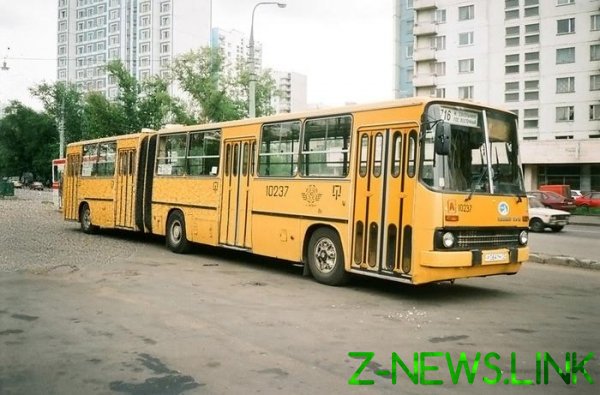
The fight could start with a completely innocent request for transfer of voucher in such a crowded salon for one such request could be interpreted as mockery. Another reason could be otdavlennaya leg or any products shopping bags often scuffle began shortly after the phrase “look what you did to my balls!”. In General the conflicts and fights in the Soviet transport was not rare. Interestingly, passengers are not always tried to separate the fighting, but was often split into “support groups” and urged on the conflict — thus, apparently, somehow skrashivaya shared the boredom and dullness of the trip. Police fights tram boors ended, except that in exceptional cases, usually slightly wrinkled bullies just went in different directions.
Output in off-peak hours at the stop demanded a separate skills — if you stood at the door, and not cherished “the middle,” then rallied the working masses are often swept you out of the salon at all major transit stops like metro stations. Once on the street — could not easily be counted one or more buttons of the jacket — now they simply looked also rushed and other clothes — I know a case when a Soviet bus, the crowd made a girl, followed by someone with great contempt threw away her skirt. Sometimes you can be short of not only buttons, but also wallet or coins — Soviet pickpockets in the trams and buses were very common.
Instead of an epilogue.
Summarizing all written, you can say so — the Soviet transport was an excellent reflection sotsialisticheskoi system in which people do not feel themselves masters of ownership, do not ask from the state, and silently fighting for limited resources — be it “free” apartment or a seat in the tram…
Such cases.
And you remember the Soviet transport and any history associated with it? What do think about all this?
Write in the comments, interesting)
© 2020, paradox. All rights reserved.



